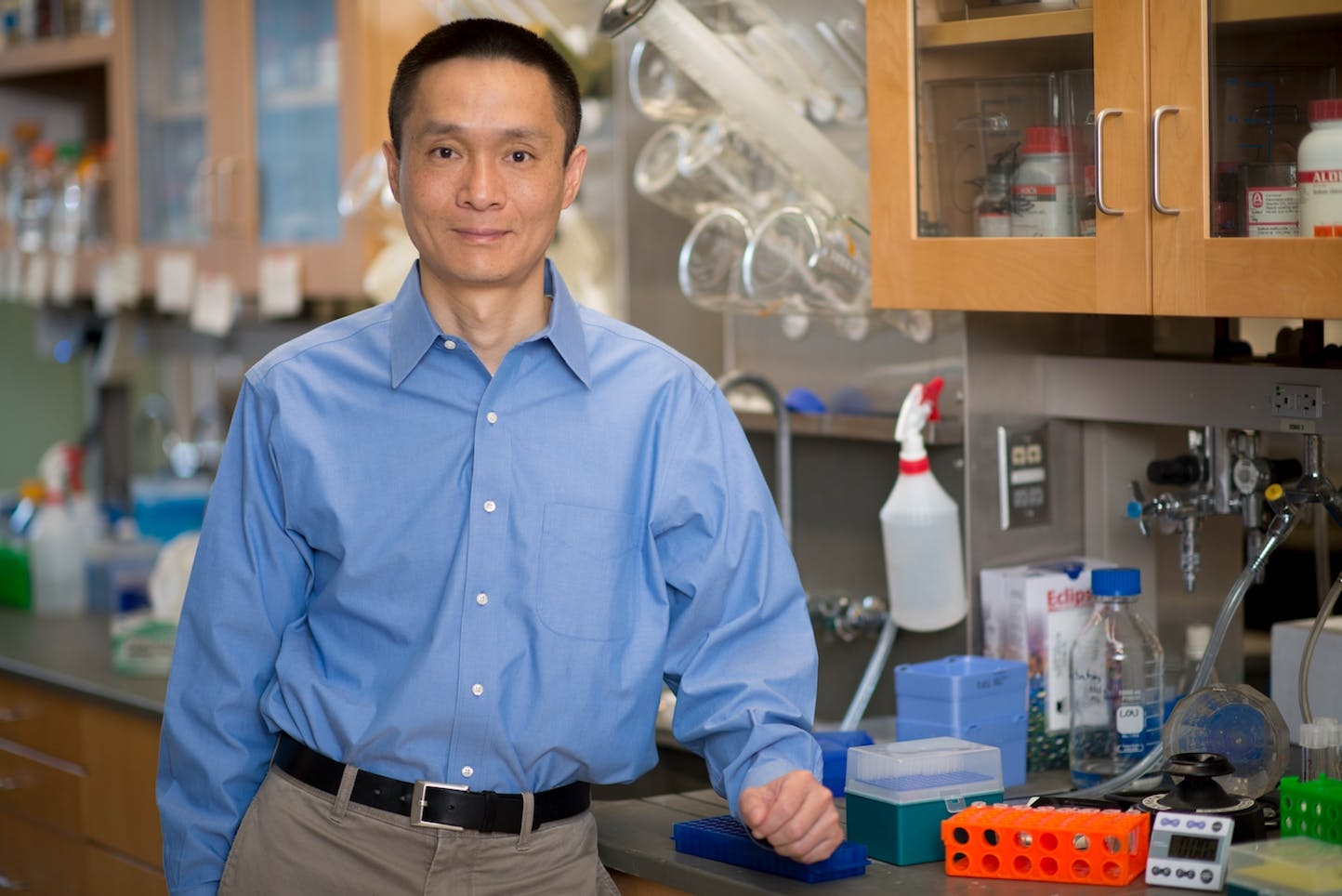Mapping genetic modifications to understand cancer

Nucleic acids, which include DNA and RNA, carry the genetic information that encodes the building blocks of cells and tissues. Chuan He, PhD, and colleagues study how modifications, such as methylation, to RNA can lead to changes in how genes are expressed and, ultimately, result in disease. This field is referred to as epitranscriptomics.
He's laboratory discovered the first RNA demethylase, an enzyme that removes methylation modifications, and showed for the first time that it is possible to reverse RNA modifications. He and his colleagues also develop new technologies to map DNA and RNA modifications as well as study genetic structures. They are in the process of establishing RNA modifications as a main, fundamental mechanism of gene expression regulation, and hope to develop technologies that can directly benefit patients and clinical practices.
UChicago Medicine: You are going to lead Chicago's first Center of Excellence in Genomic Science. What is the mission of the Center?
Chuan He: The mission is to develop enabling sequencing technologies to detect and map key RNA modifications. Our Center will establish high-throughput, high-resolution, and high-sensitivity methods for epitranscriptome research in all fields of biology.
How will the Center help accelerate cancer research?
Current epitranscriptome studies are significantly hampered by the lack of technologies that enable quantitative mapping of any type of mRNA/lncRNA modifications at high resolution and high sensitivity. We and our collaborators (including cancer biology groups here at the University of Chicago) have discovered noticeable roles of RNA methylation in cancer progression. Our Center will provide key technologies to dissect underlying mechanisms of RNA methylation in cancer progression. In addition, many proteins involved in RNA modifications are new targets for developing future therapies.
How has your field of study changed since you began your career? Where do you think it is heading?
Although RNA modifications have been studied for decades, the field of epitranscriptomics has really been started here at the University of Chicago. My group and Professor Tao Pan's group started looking into this new field of biology in 2008. The discovery of the first RNA demethylase by my laboratory in 2011 sparked and launched the field. The field has developed rapidly in the past 2-3 years. The impact on different biological processes and human diseases are starting to emerge, with the involvement of many biological laboratories here at the University of Chicago.
How did you get interested in studying cancer?
We have major interests in cancer research on both RNA methylation and DNA methylation. One can gain fundamental biological knowledge, and most importantly, true breakthroughs in basic biology or technology development could benefit cancer patients. As scientists I think all of us hope to see our work benefit society.
What is the most rewarding part of your job?
It is really rewarding to see my students enjoying their research and having their own dreams. It is also rewarding to see that some of our work could eventually benefit patients.
Who inspires you?
My peers, colleagues, and collaborators. We have many collaborators here at the University of Chicago. They taught us new biology and are constantly inspiring us to explore new fields of biology
What are your favorite hobbies outside of work?
Sports and travel.
What do you love about the University of Chicago?
I love the "relaxed" but highly intellectual environment and atmosphere at the University. It demands academic excellence in a sense that one needs to think outside of box and try to be different. It inspires innovative work.
What is one thing on your bucket list?
Developing something that will be used in or assist future anti-cancer therapy. I think we are getting there.
